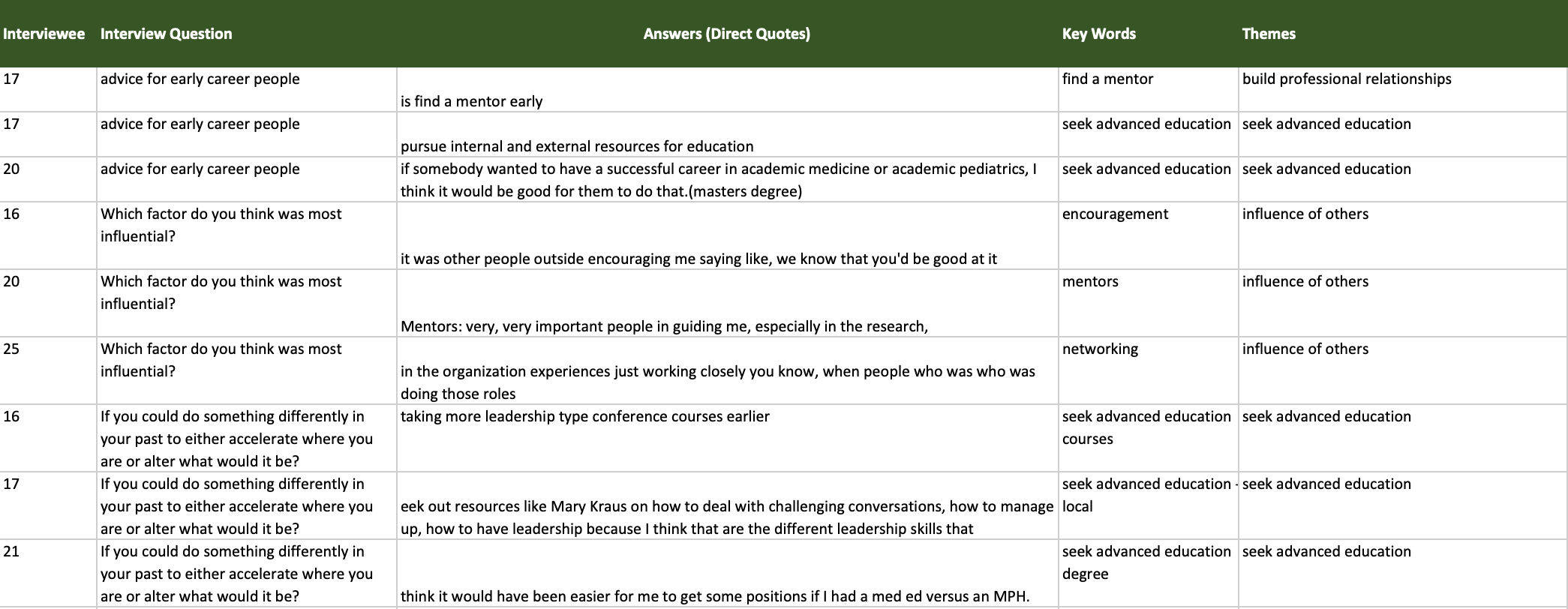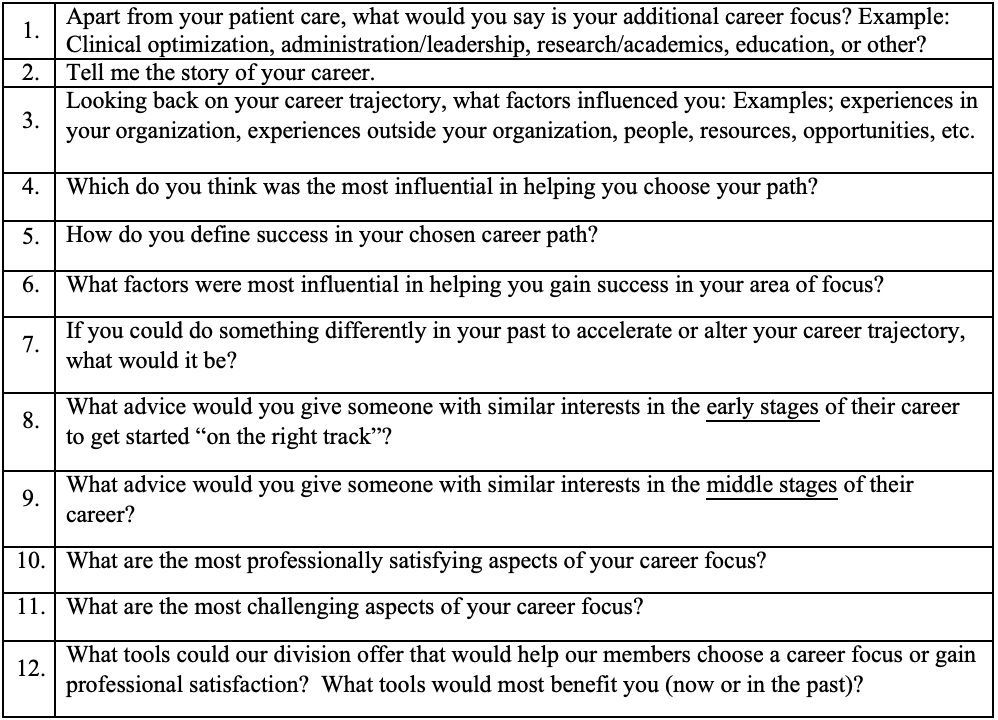Background: Pediatric hospital medicine (PHM) is the newest and fastest growing specialty within pediatrics, but job dissatisfaction and loss of purpose can influence job performance and retention. Defining a career focus, such as expert clinician, medical education, quality and safety, or administrative leadership, has been noted to improve job satisfaction for hospitalists, however there are limited studies addressing strategies to promote career progression in PHM. The objective is to inform faculty development needs for early and mid-career hospitalists by characterizing key factors in the identification and optimization of a career track.
Methods: Grounded theory and quantitative methods were used to identify factors that led to career focus selection and optimization. A study group was formed to develop a survey and structured interview tool based on literature review and group consensus on key elements. Members of a PHM group in a large free-standing children’s hospital who agreed to participate were sent a survey, which included information about demographics, advanced training/education, and career focus. Each participant then underwent a one-on-one semi-structured interview conducted by a single study team member. A total of 12 open-ended questions were asked (Figure 1) and answers were recorded, transcribed, and deidentified. Responses to question 2 were sorted to the most appropriate question category. Responses were then reviewed independently by two study group members and coded into themes; differences were discussed until general consensus was achieved (Image 1). Due to the small sample size, categorical sub-groups were not established, however analyses based on age, sex, completion of fellowship, and administrative versus non-administrative career path were performed to determine if gross variations existed.
Results: On average, 3 to 6 themes were identified for each question. The major theme associated with helping choose a career path was the ‘influence of others’. Subthemes included passive influence (e.g. “[I saw] some amazing physicians that I work with and … how they operated and …I wanted to mirror [that]”) and direct influence (e.g. identifying a mentor as a “large reason as to why I’ve had some of these opportunities”). When participants were asked what they would have done differently to accelerate their career path, a common theme was ‘seek further education’ (e.g. “taking more leadership courses” and “pursue some higher education earlier on [such as an] MBA or MPH”). Finally, advice most frequently offered to early- and mid-career hospitalists to gain success included the themes ‘build professional relationships’ and ‘seek advanced education’.
Conclusions: The use of semi-structured interviews identified the main components influencing career path decisions and enhancing career development. This study demonstrates the role active and passive influence has on choosing a career path as well as the importance physicians place on pursuing further education and building relationships. These findings inform essential next steps for physician development programming, such as building a formal mentorship program and creating opportunities for networking within PHM.


